Ink to the past: Exhibit on history of tattooing in Boston at Eustis Estate in Milton
MILTON – Colorful images of snakes slithering from the eyes of a skull. A naked woman perched on a koi fish. A serpent flying with the wings of an eagle. A powerful pirate woman armed with a sword and dressed in a bold red outfit. These are some of the examples of tattoo designs on display in the new exhibit "Loud, Naked & in Three Colors” on view at the Eustis Estate in Milton.
Curated by Derin Bray and Margaret Hodges, the exhibit recounts Boston’s little-known tattooing history that had its heyday in the late 19th century when getting inked was a popular pastime. Subtitled “The History of Tattooing in Boston,” the exhibit is on view through Oct. 30 and centers on the Liberty family’s dominance of Boston's tattoo scene from their shops in Scollay Square until the practice was banned in 1962.
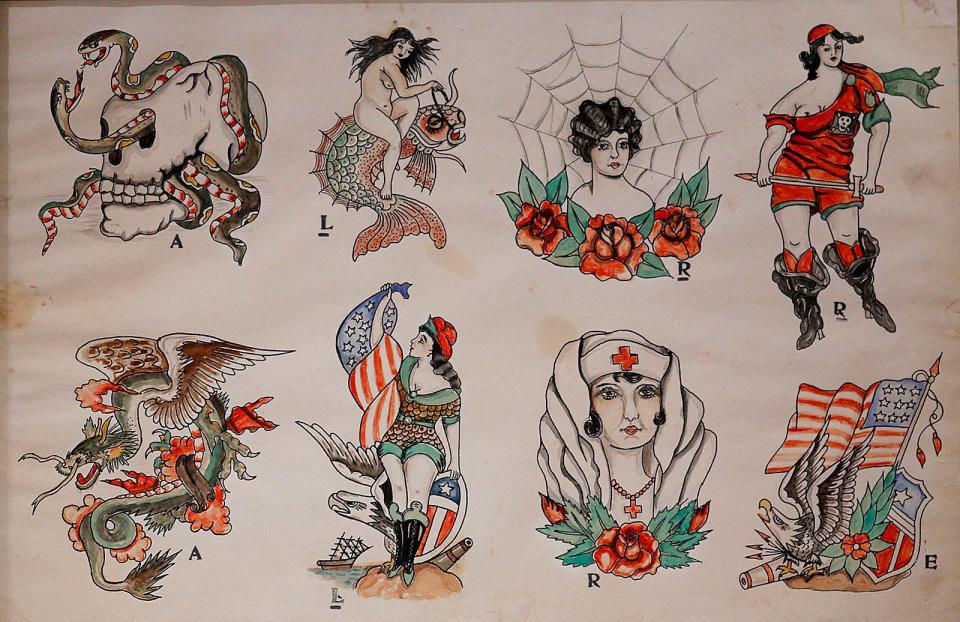
On display are archival images, postcards, historical newspapers, pamphlets, drawings, stencils and advertisements, including a 1910 supplies price list that offered an outline machine for $12.50. Other objects to see are the old tools of the trade, including kits with colorful inks and needles made of bone.
A timeless tradition: Marshfield wedding gown exhibit offers a glimpse into town's history
"The real triumph of the show is just bringing all this material together," Bray said. "To see this much historic tattoo material in one place is unusual, and for some of this stuff it is the first time in over 100 years it has been exhibited for the public."
Bray said he couldn't find anything published on the history of tattooing in Boston, leading him and Hodges to begin the search. They reached out to descendants of tattoo artists throughout Boston's history and found artifacts in their attics, basements and garages.
"After doing that for a year, a story kind of took shape," Bray said.
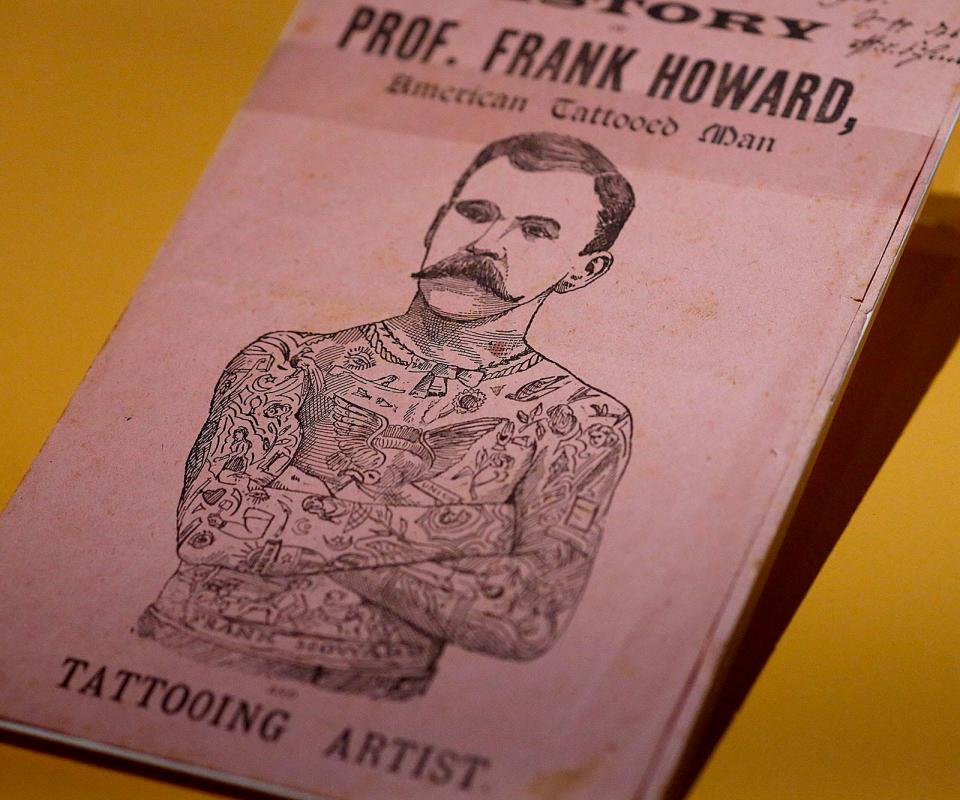
They began the six-year project about eight years ago. In November 2020 the duo published a book, "Loud, Naked & in Three Colors: The Liberty Boys & The History of Tattooing in Boston." Bray called the exhibit the "bookend" of their project.
Frank Howard (1857-1925), whom Bray called "Boston's leading tattoo artist for decades," got tattooed and began inking others in 1884, he said.
Annie Howard (1859-1911) and Frank Howard are known for their role in Barnum & Bailey's Greatest Show on Earth. Frank Howard was the "Original Tattooed Man" and Annie Howard was the "first tattooed woman to tour with Barnum & Bailey," according to the exhibit.
The Howards' tattooing memorabilia featured in the exhibit includes a "Smith & Howard Tattooing Directions" circa 1910, "Book of Tattoo Designs" circa 1905 and more. A globe, an American flag, an anchor and a bald eagle are painted on the book.
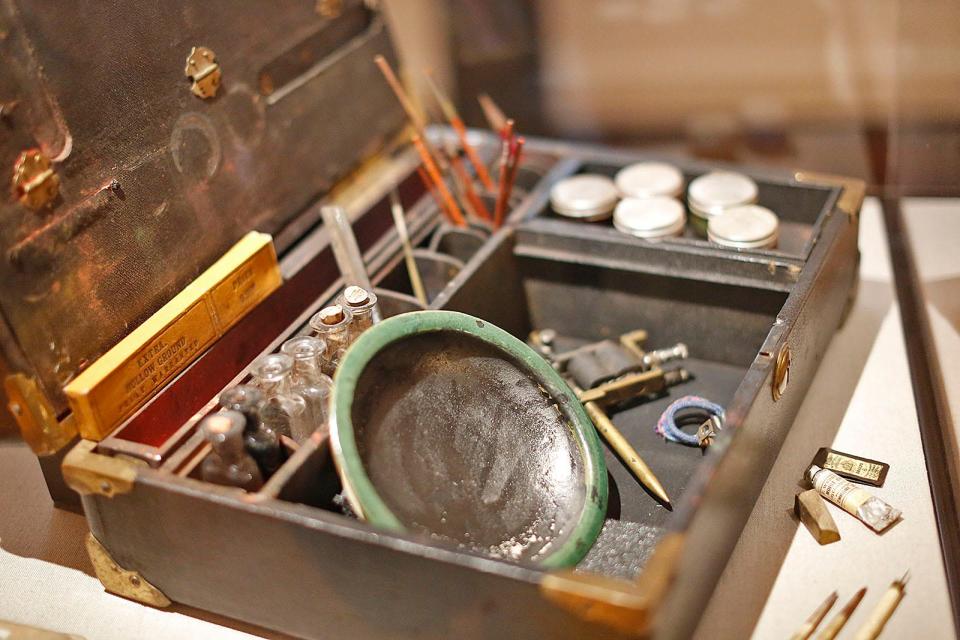
Bray said the circus helped spread the popularity of tattoos.
"The tattoo artists were often covered in tattoos so they would perform on the stage, showing off their tattoos and then after the show was over they would tattoo spectators for money," Bray said.
He said electric tattoo machines emerged in the late 1880s or early 1890s, with its first patent in 1891. The increased availability of tattoos led to a rise in popularity.
The second and third rooms of the exhibit feature Boston's Scollay Square and recount the Liberty family, which had a tattoo shop in Boston. Frank Howard sold Edward "Dad" Liberty (1883-1957) his first tattoo kit in the early 20th century.
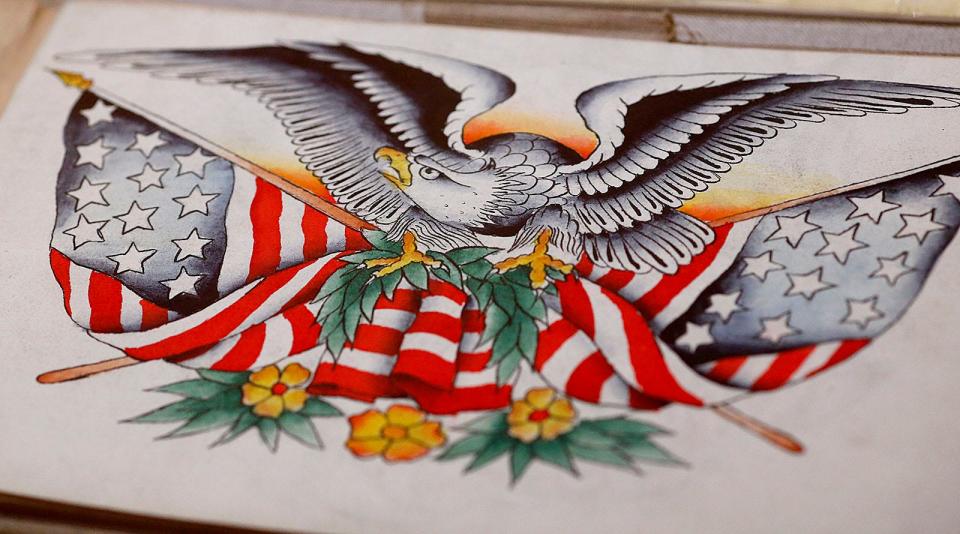
He and his three sons – Frank, Ted and Harold "Lefty" Liberty – took off.
"A lot of tattooers even then ... were itinerant to a point where they'd travel with carnivals or side shows or they would work seasonally, but the Libertys stayed in Boston, which was kind of unusual," Bray said.
Items on display by Edward Liberty include his "Directions for Care of a Tattoo Mark Which Has Been Removed" circa 1935 and designs by him or his second wife, Lena E. Lane, from 1930-35.
Harold "Lefty" Liberty's Electric Tattoo Machine from 1920 to 1940 is also on display.
The exhibit includes a World War II section, which Bray said some consider "the golden era of tattooing, at least in terms of tattooing for money."
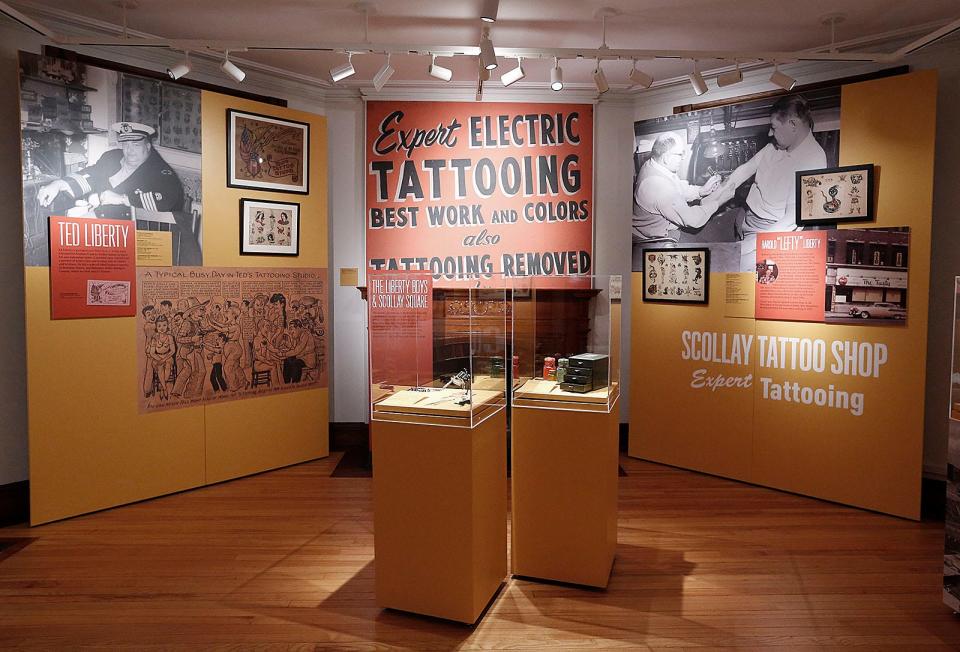
A Frank Liberty quote told to a reporter in the late 1940s is blown up on the wall of the exhibit. It reads: "I had a hunch during the war when these young fellers were walking in ordering 'em loud, naked and in three colors that there would come a day of reckoning."
This quote refers to when men would return and ask for their tattoo to be covered up or clothed, Bray said.
Tattooing was banned in Massachusetts in 1962. "Lefty" Liberty was the last Scollay Square tattoo artist in Boston. Many artists moved to nearby states to continue their craft. The exhibit concludes in about 1973.
In 2000, a Massachusetts Superior Court judge struck down the state's 38-year-old tattooing ban, finding it violated First Amendment free-speech rights.
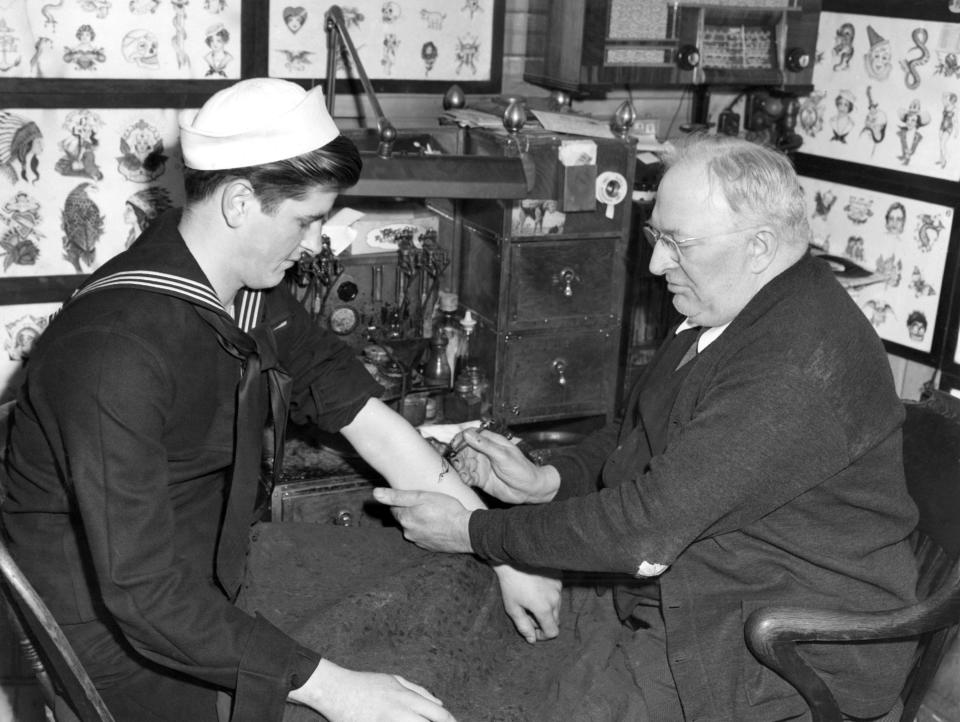
'Loud, Naked & in Three Colors'
When: 10 a.m. to 4 p.m. Friday-Sunday until Oct. 30
Where; Eustis Estate, 1424 Canton Ave., Milton
Tickets: $20, $17 for seniors, $10 for students
Information: www.historicnewengland.org
Thanks to our subscribers, who help make this coverage possible. If you are not a subscriber, please consider supporting quality local journalism with a Patriot Ledger subscription. Here is our latest offer.
Reach Alyssa Fell at afell@patriotledger.com.
This article originally appeared on The Patriot Ledger: Eustis Estate exhibit on Boston tattoo history is more than skin deep

